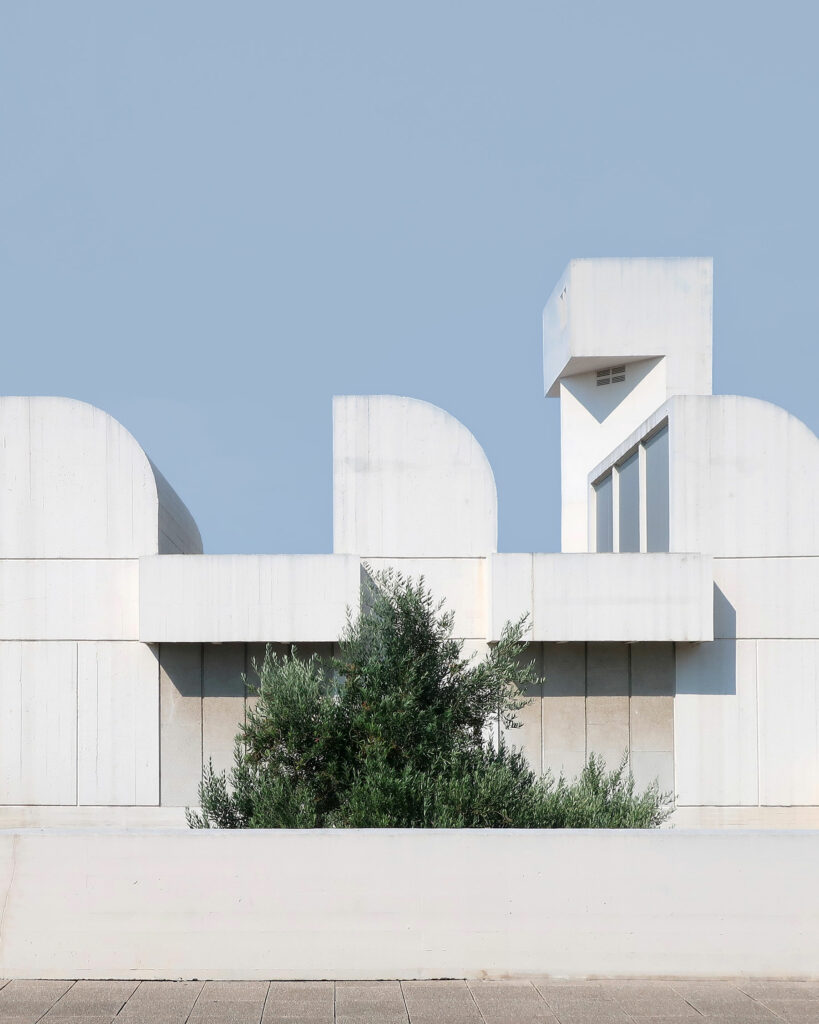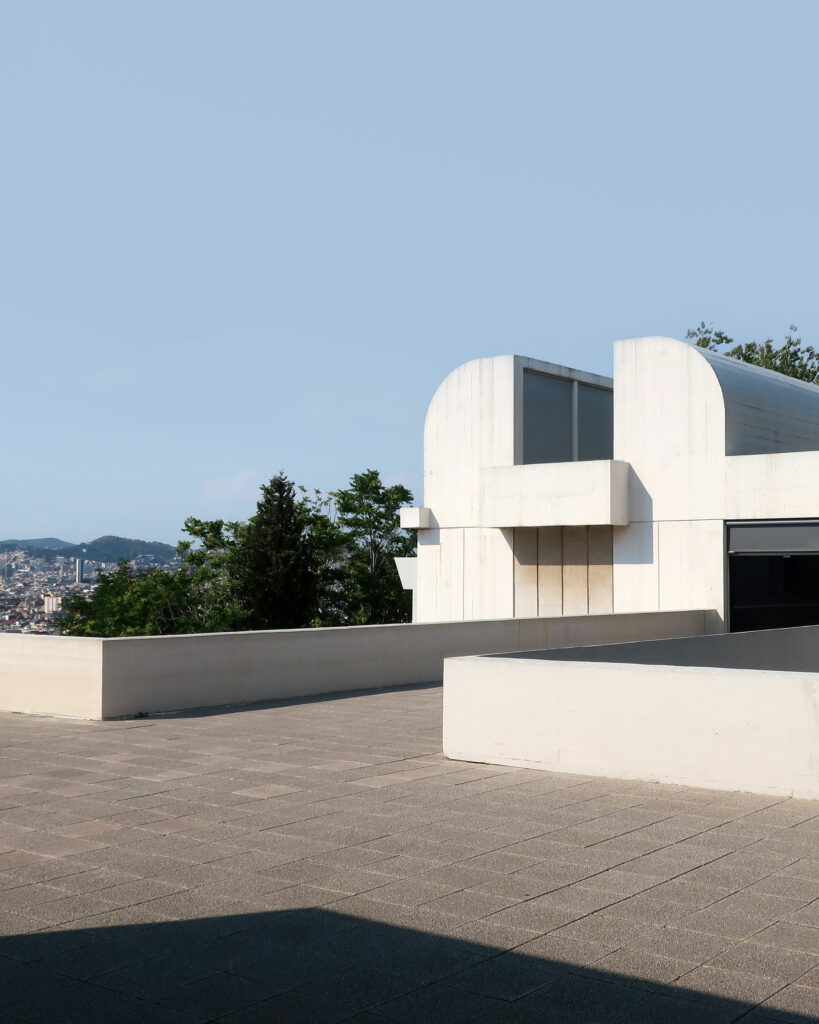The Fundació Joan Miró is a fascinating interplay of art and architecture. Founded by Miró himself, the museum takes an interdisciplinary approach by presenting both his own works and Contemporary Art of the 20th and 21st centuries. Built in 1975, the building is picturesquely situated on the Montjuïc hill and offers breathtaking views of the city from its terrace.
Josep Lluís Sert, a close friend of Miró and a key figure in modern architecture, was responsible for the architectural concept. Sert was an internationally renowned Spanish architect and was strongly influenced by the ideals of leading architects such as Le Corbusier, Walter Gropius and Mies van der Rohe. His designs are characterized by rationalist structures and avant-garde approaches. His concept for the Maeght Foundation in St. Paul de Vence in 1964 was the inspiration for the Fundació Joan Miró.


The building is characterized by its modern, rationalist architecture, marked by clean lines and minimalist forms. Large windows and skylights permeate the building, providing an abundance of natural light. The layout of the rooms around a central courtyard creates a harmonious balance between interior and exterior spaces, with additional terraces extending the premises and offering views of the surrounding landscape.
Over the years, the building has been expanded twice, in 1988 and 2000, to create more space for exhibitions and visitors. These expansions, under the direction of Jaume Freixa, a student of Sert, respect the original architectural spirit while meeting the functional demands of a modern museum.

